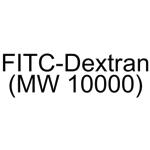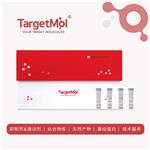Dextran labeled with fluorescein isothiocyanate
Fluorescein isothiocyanate–dextran (FITC-Dextran 70) is use as a fluorescent probe to study cell processes such as cell permeability, phagocytosis and endocytosis and to study mechanisms of biomolecular delivery. FITC-Dextran 70 may be used to study the capacity, selectivity and efficiency of encapsulation and release by drug delivery vehicles.
Fluorescein isothiocyanate–dextran (FITC-Dextran 150) is use as a fluorescent probe to study cell permeability. FITC-Dextran 150 is useful to study processes that affect the permeability of the blood brain barrier (BBB) and microvascular structures. FITC-Dextran 150 is used in fluorescence microlymphography.
water soluble cellulase substrate
Dextran is a polymer of anhydroglucose. It is composed of approximately 95% alpha-D-(166) linkages. The remaining (163) linkages account for the branching of dextran. Conflicting data on the branch lengths implies that the average branch length is less than three glucose units. However, other methods indicate branches of greater than 50 glucose units exist. Native dextran has been found to have a molecular weight (MW) in the range of 9 million to 500 million. Lower MW dextrans will exhibit slightly less branching and have a more narrow range of MW distribution. Dextrans with MW greater than 10,000 behave as if they are highly branched. As the MW increases, dextran molecules attain greater symmetry. Dextrans with MW of 2,000 to 10,000, exhibit the properties of an expandable coil. At MW below 2,000, dextran is more rod-like. The MW of dextran is measured by one or more of the following methods: low angle laser light scattering, size exclusion chromatography, copper-complexation and anthrone reagent colorometric reducing-end sugar determination and viscosity.
FITC-Dextran serves as a versatile fluorescent tracer extensively used in biological and physiological research. Its primary actions encompass the assessment of permeability in biological barriers, such as the blood-brain barrier, cell membranes, and vascular walls. It is also utilized to investigate cellular uptake mechanisms, endocytosis, and cell junction permeability, focussing on essential cellular processes. FITC-Dextran aids in measuring blood flow, vascular drainage, and renal elimination, providing insights into microcirculation and capillary dynamics. Further, this marker is also instrumental in understanding tissue and organ characteristics and can serve as a valuable tool for tracing molecules, contributing to the exploration of a wide array of biochemical phenomena.


